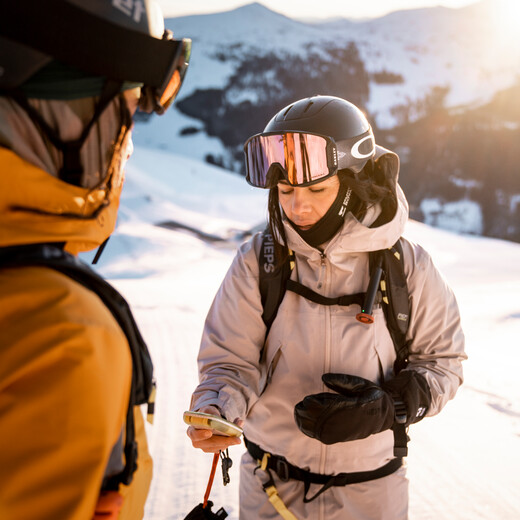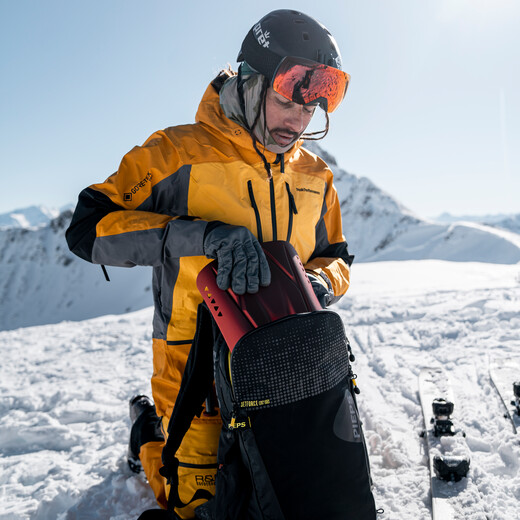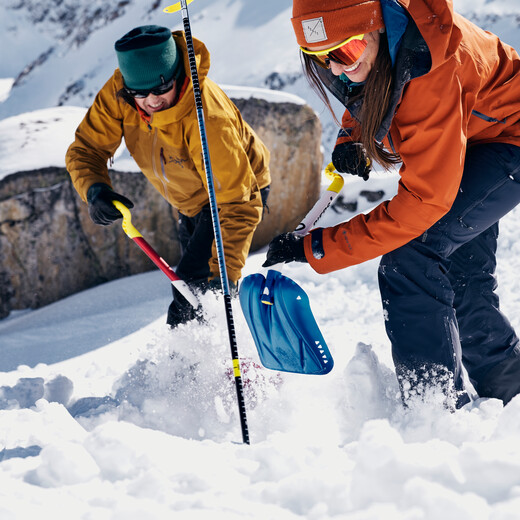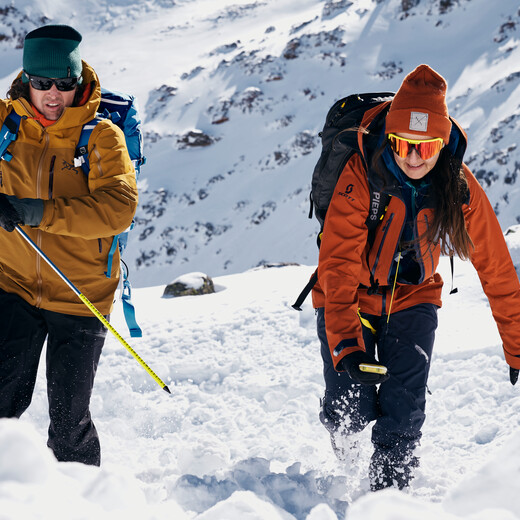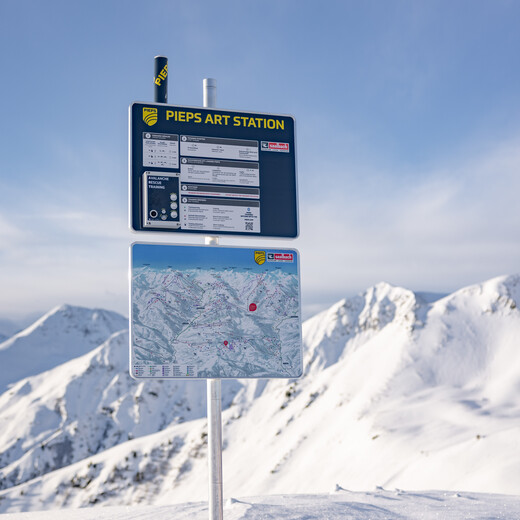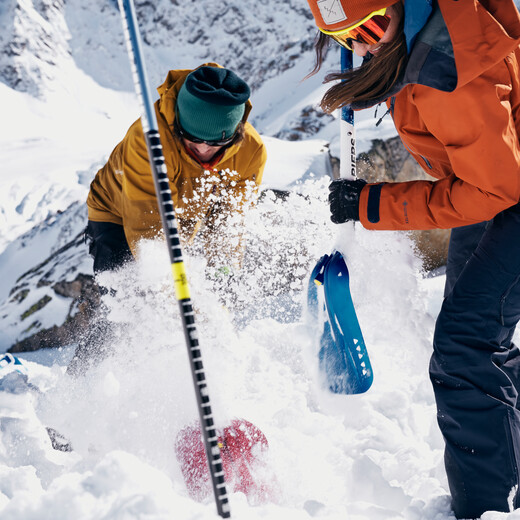The sun is shining in the sky, the slope is covered with fresh snow and the ski run is still completely untouched. It is hard to resist skiing down the mountain with high anticipation. And yet this is exactly where the risk is the highest. Skills in searching for buried victims and well-functioning equipment are a must if you want to move freely in the area.
The following safety instructions are vital before and after every freeride tour:
- „Buddy system“! That is to never enter the area on your own.
- Have you checked the avalanche report? Did you understand it?
- Weather forecast OK? If necessary, talk to locals.
- Equipment complete? This includes an avalanche transceiver, a shovel, a probe and a mobile phone.
- Have you done the avalanche transceiver check? Working with the avalanche transceiver, the probe and the shovel should be practised regularly.
- Does the group fit my abilities? Or am I forced to carry out dangerous activities?
- Are other skiers using the same route as me? Always keep an eye on them.
- If you'd like to explore unknown territories, better book an experienced guide.
- Keep distance! Start off separately, even on seemingly safe slopes.
- If you are not sure (or in bad weather and poor visibility): It is better to avoid unsafe runs.
- Info Links:
- Portal Alpine Safety
- lawine.at
- Ortovox Safety Academy Lab
With various camps, workshops and the offers at the local ski schools and mountain guides, the Skicircus Saalbach Hinterglemm Leogang Fieberbrunn provides many possibilities for freeriders of all ages and levels of skill to properly prepare for skiing off piste.
The most important rules for freeriding in a nutshell:
- Fresh snow and rain always increase the chances of an avalanche.
- The first sunny day after snowfall is said to be the most dangerous.
- Fresh accumulations of wind-driven snow are often easy to release.
- Quick, distinctive warming and/or strong sunlight increase the danger of avalanches.
- Poor visibility (fog) does not only impede orientation but also the ability to judge the danger of avalanches.

